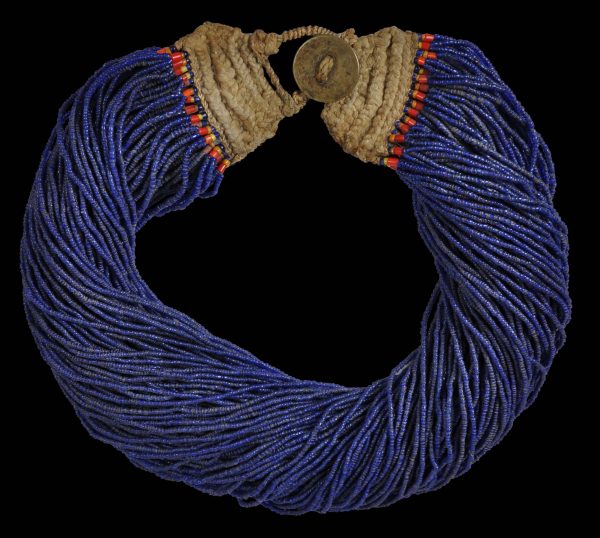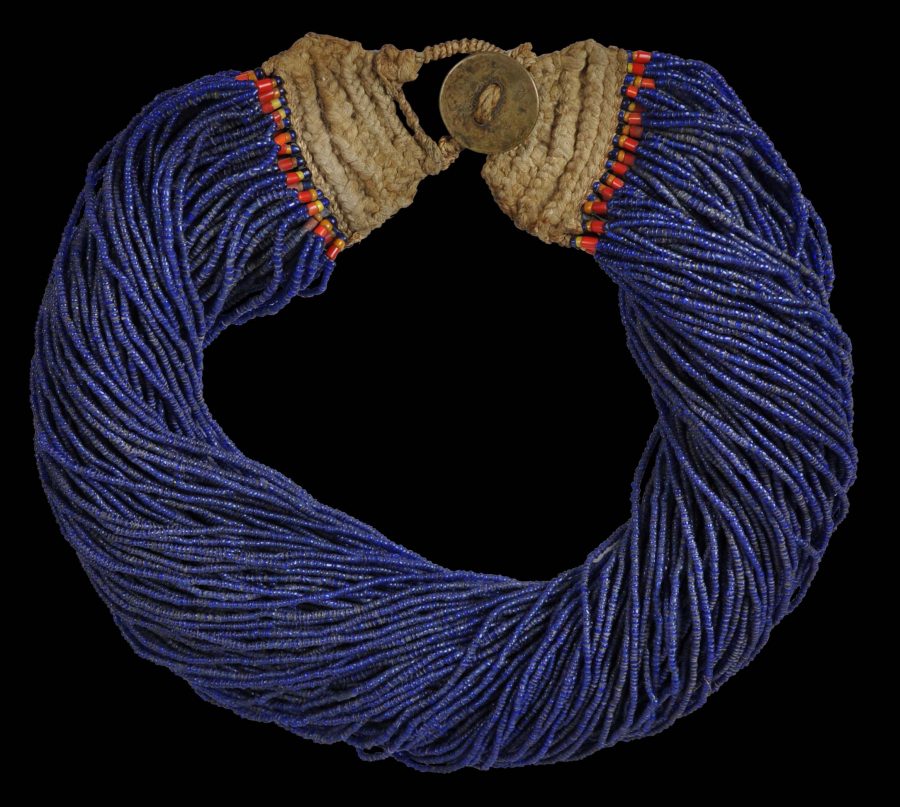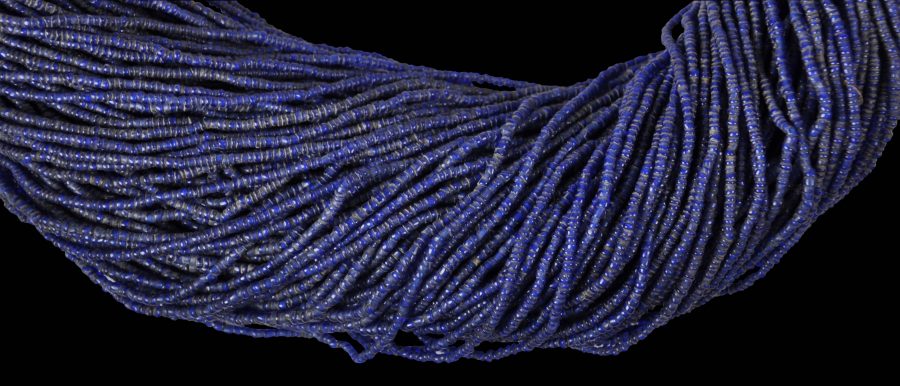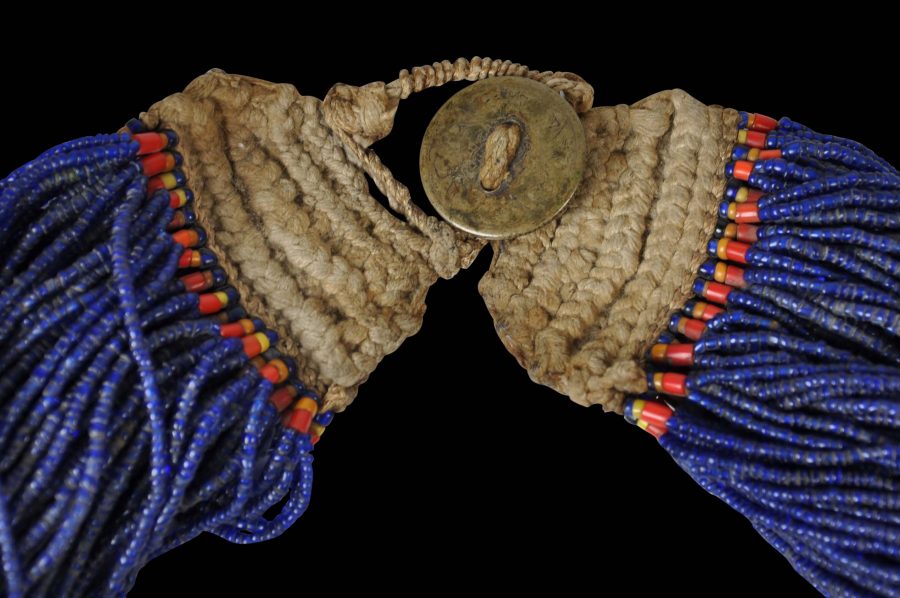This very fine and unusually large Naga necklace comprises no less than 114 separate strands of small dark blue glass beads, as well as orange and red beads at the woven cotton ends.
Each bead has a fine patina – it is clear that the necklace was worn and much used. The threading of each strand is incorporated into a woven cotton panel at each end. The necklace is closed with a loop and a well-worn colonial rupee coin that has been used as a button.
Among the Nagas, necklaces that are thick with so many strands typically were worn by women; men wore sparser necklaces. And the thicker the necklace, the greater the presumed wealth of the wearer and her family. So it can be presumed that this necklace came from an unusually wealthy Naga family.
The beads used in this and related necklaces most probably originated in India. Larger beads often were trade beads from Venice, France and China.
Similar examples are illustrated in Barbier (1984, p. 35), Jacobs (1990, p. 317), and Shilu (2003, p. 13).
The Naga are a tribal group concentrated in the border areas of north-eastern India and eastern Burma. They were attracted to rare goods that could be bartered from outside their region. Beaded necklaces were very popular as a show of finery but also as a portable means of displaying and carrying wealth. The components that went into making necklaces were regarded as currency items themselves. Beads and necklaces were accumulated as heirlooms and were passed as dowries.
The example here is in excellent, wearable condition. It has a wonderful colour and is either an excellent collector’s piece, or would look superb and contemporary if worn.
References
Barbier, J. P., Art of Nagaland: The Barbier-Müller Collection, Geneva, Los Angeles County Museum of Art, 1984.
Daalder, T., Ethnic Jewellery and Adornment: Australia, Oceania, Asia, Africa, Ethnic Art Press/Macmillan, 2009.
Jacobs, J., The Nagas: Hill Peoples of Northeast India, Thames & Hudson, 1990.
Saul, J.D., The Naga of Burma: Their Festivals, Customs and Way of Life, Orchid Press, 2005.
Shilu, A., Naga Tribal Adornment: Signatures of Status and Self, The Bead Museum, Washington, 2003.





